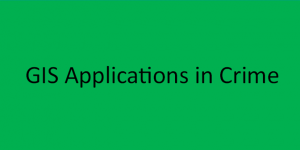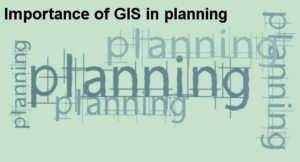GIS stands for Geographic Information system. It is a computer system that collects, analyzes, stores and disseminates geographic information for use by different entities to facilitate informed and smooth decision making. GIS has important uses in different fields, including in the environmental field. Below are some of the importance of GIS in environment.
1. Environmental Impact Analysis (EIA)
EIA is an important policy initiative to conserve natural resources and environment. Many human activities produce potential adverse environmental effects which include the construction and operation of highways, rail roads, pipelines, airports, radioactive waste disposal and more. Environmental impact statements are usually required to contain specific information on the magnitude and characteristics of environmental impact. The EIA can be carried out efficiently by the help of GIS, by integrating various GIS layers, assessment of natural features can be performed.
2. Disaster Management
Today a well-developed GIS systems are used to protect the environment. It has become an integrated, well developed and successful tool in disaster management and mitigation. GIS can help with risk management and analysis by displaying which areas are likely to be prone to natural or man-made disasters. When such disasters are identified, preventive measures can be developed.
3. Zoning of Landslides hazard
Landslide hazard zonation is the process of ranking different parts of an area according to the degrees of actual or potential hazard from landslides. The evaluation of landslide hazard is a complex task. It has become possible to efficiently collect, manipulate and integrate a variety of spatial data such as geological, structural, surface cover and slope characteristics of an area, which can be used for hazard zonation.
4. Determination of land cover and land use
Land cover means the feature that is covering the barren surface .Land use means the area in the surface utilized for particular use. The role of GIS technology in land use and land cover applications is that we can determine land use/land cover changes in the different areas. Also it can detect and estimate the changes in the land use/ land cover pattern within time. It enables to find out sudden changes in land use and land cover either by natural forces or by other activities like deforestation.
5. Estimation of flood damage
GIS helps to document the need for federal disaster relief funds, when appropriate and can be utilized by insurance agencies to assist in assessing monetary value of property loss. A local government need to map flooding risk areas for evaluate the flood potential level in the surrounding area. The damage can be well estimate and can be shown using digital maps .
6. Management of Natural Resources
By the help of GIS technology the agricultural, water and forest resources can be well maintain and manage. Foresters can easily monitor forest condition. Agricultural land includes managing crop yield, monitoring crop rotation, and more. Water is one of the most essential constituents of the environment. GIS is used to analyze geographic distribution of water resources. They are interrelated, i.e. forest cover reduces the storm water runoff and tree canopy stores approximately 215,000 tons carbon. GIS is also used in aforestation.
7. Soil Mapping
Soil mapping provides resource information about an area. It helps in understanding soil suitability for various land use activities. It is essential for preventing environmental deterioration associated with misuse of land. GIS Helps to identify soil types in an area and to delineate soil boundaries. It is used for the identification and classification of soil. Soil map is widely used by the farmers in developed countries to retain soil nutrients and earn maximum yield.
8. Wetland Mapping
Wetlands contribute to a healthy environment and retain water during dry periods, thus keeping the water table high and relatively stable. During the flooding they act to reduce flood levels and to trap suspended solids and attached nutrients. GIS provide options for wetland mapping and design projects for wetland conservation quickly with the help of GIS. Integration with Remote Sensing data helps to complete wetland mapping on various scale. We can create a wetland digital data bank with spices information using GIS.
9. Irrigation management
Water availability for irrigation purposes for any area is vital for crop production in that region. It needs to be properly and efficiently managed for the proper utilization of water.
10. Identification of Volcanic Hazard
Volcanic hazard to human life and environment include hot avalanches, hot particles gas clouds, lava flows and flooding. Potential volcanic hazard zone can be recognized by the characteristic historical records of volcanic activities, it can incorporate with GIS. Thus an impact assessment study on volcanic hazards deals with economic loss and loss of lives and property in densely populated areas.




Muhd Sani Muhd
12 Nov 2019Thank You For This
muhd sani muhd
12 Nov 2019Thanks
Okello Daniel Opio.
26 Nov 2019Thanks ,your information are well researched.please continues.
Ayaat own
18 Feb 2020U gave importance of gis according to env.but where it’s importance in maping. Moreover gis has importance in many other fields so it’s better to summarize all the importance.
henos
5 Apr 2020thanks alot.
Seth Agyarko
19 Jan 2021Your theory about GIS Environment is clear and understood
well done
RONNY B
22 Aug 2022YOUR INFORMATION IS CLEAR
Annas Yusuf
6 Mar 2024Your theory on importance of GIS in environment is clear and well understood. Thank you